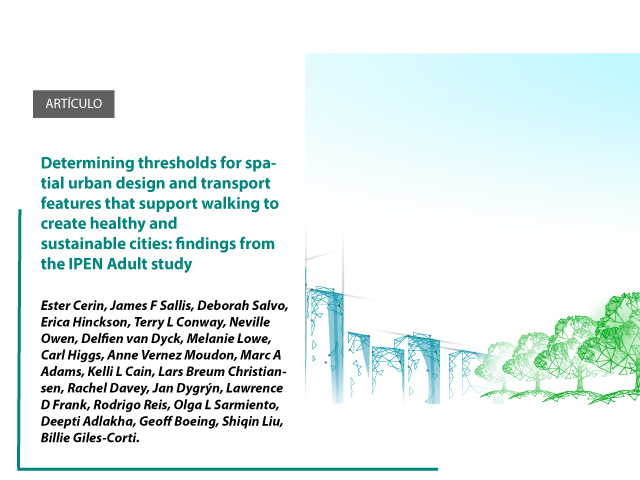[Artículo]
Los invitamos a leer el siguiente artículo que contó con la participación de la Dra. Olga Lucía Sarmiento.
Summary
An essential characteristic of a healthy and sustainable city is a physically active population. Effective policies for healthy and sustainable cities require evidence-informed quantitative targets. We aimed to identify the minimum thresholds for urban design and transport features associated with two physical activity criteria: at least 80% probability of engaging in any walking for transport and WHO's target of at least 15% relative reduction in insufficient physical activity through walking. The International Physical Activity and the Environment Network Adult (known as IPEN) study (N=11 615; 14 cities across ten countries) provided data on local urban design and transport features linked to walking. Associations of these features with the probability of engaging in any walking for transport and sufficient physical activity (≥150 min/week) by walking were estimated, and thresholds associated with the physical activity criteria were determined. Curvilinear associations of population, street intersection, and public transport densities with walking were found. Neighbourhoods exceeding around 5700 people per km2, 100 intersections per km2, and 25 public transport stops per km2 were associated with meeting one or both physical activity criteria. Shorter distances to the nearest park were associated with more physical activity. We use the results to suggest specific target values for each feature as benchmarks for progression towards creating healthy and sustainable cities.













